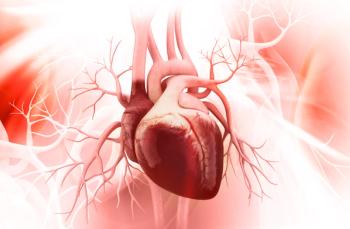
Infertility treatment increases stroke risk
In a recent study, stroke was more common among women within 12 months after delivery if infertility treatment was administered.
According to a recent study published in JAMA Network Open, among patients who receive infertility treatment, there is an increased risk of stroke-related hospitalization.
Rapid growths in the use of infertility treatment have been observed over time, with assisted reproductive technology (ART) use increasing approximately 2-fold in the past 10 years. While these treatments are mostly considered safe, recent data has indicated adverse pregnancy and medical outcomes associated with their use.
Attention has been paid to the potential risk of cardiovascular disease (CVD), which is the leading cause of death in women. Stroke, which is reported in about 1 in 5 women in their lifetime, also may be associated with infertility treatment.
Strokes comprise about 7% of pregnancy-related deaths in the United States, making them a vital health risk. However, it is unclear how infertility treatment impacts stroke risk.
To determine the association between infertility treatment and stroke risk, investigators conducted a retrospective cohort study. Data from 2010 to 2018 was obtained from the Nationwide Readmissions Database (NRD), including all-payer hospital inpatient stays.
The NRD used International Classification of Diseases, Ninth Revision, Clinical Modification (ICD-9-CM) codes to identify deliveries with and without infertility treatmentfrom 2010 through the first 3 quarters of 2015, and ICD-10-CM from the fourth quarter of 2015 to 2018.
Patients aged 15 to 54 years with a hospital delivery from January to November in any of the study’s calendar years were included in the analysis. Exclusion criteria included having a hospitalization CVD before or during delivery, ectopic pregnancy, molar pregnancy, or abortive outcomes.
Patients who conceived after infertility treatment were included in the exposure group. Infertility treatment included ART and intrauterine insemination.
Development of either ischemic or hemorrhagic nonfatal stroke within 12 months postpartum was the primary outcome of the study. Secondary outcomes included nonfatal stroke hospitalization risks at 30, 60, 90, and 180 days postpartum, as well as overall stroke mortality for patients in the exposure group.
There were 31,339,991 deliveries from 2018 to 2018, 0.9% of which occurred after infertility treatment. Infertility treatment trended upward with time and maternal age, and private insurance and medium to high income were more often seen in patients who received infertility treatment.
Absolute stroke risk following a pregnancy with infertility treatment was low. Among patients who received infertility treatment, the rate of stroke complications requiring hospitalization was 37 per 100,000 people, compared to 29 per 100,000 people among patients who did not receive infertility treatment.
When compared to patients with spontaneous conception, the hazard ratio (HR) of any stroke hospitalization in patients with infertility treatment was 1.66, while the HRs of hemorrhagic stroke hospitalization and ischemic stroke hospitalization were 2.02 and 1.55 respectively.
These results indicated increased stroke risk after infertility treatment. Investigators recommended patients with infertility treatment receive early and continuous follow-up.
Reference
Sachdev D, Yamada R, Lee R, Sauer MV, Ananth CV. Risk of stroke hospitalization after infertility treatment. JAMA Netw Open. 2023;6(8):e2331470. doi:10.1001/jamanetworkopen.2023.31470
Newsletter
Get the latest clinical updates, case studies, and expert commentary in obstetric and gynecologic care. Sign up now to stay informed.










